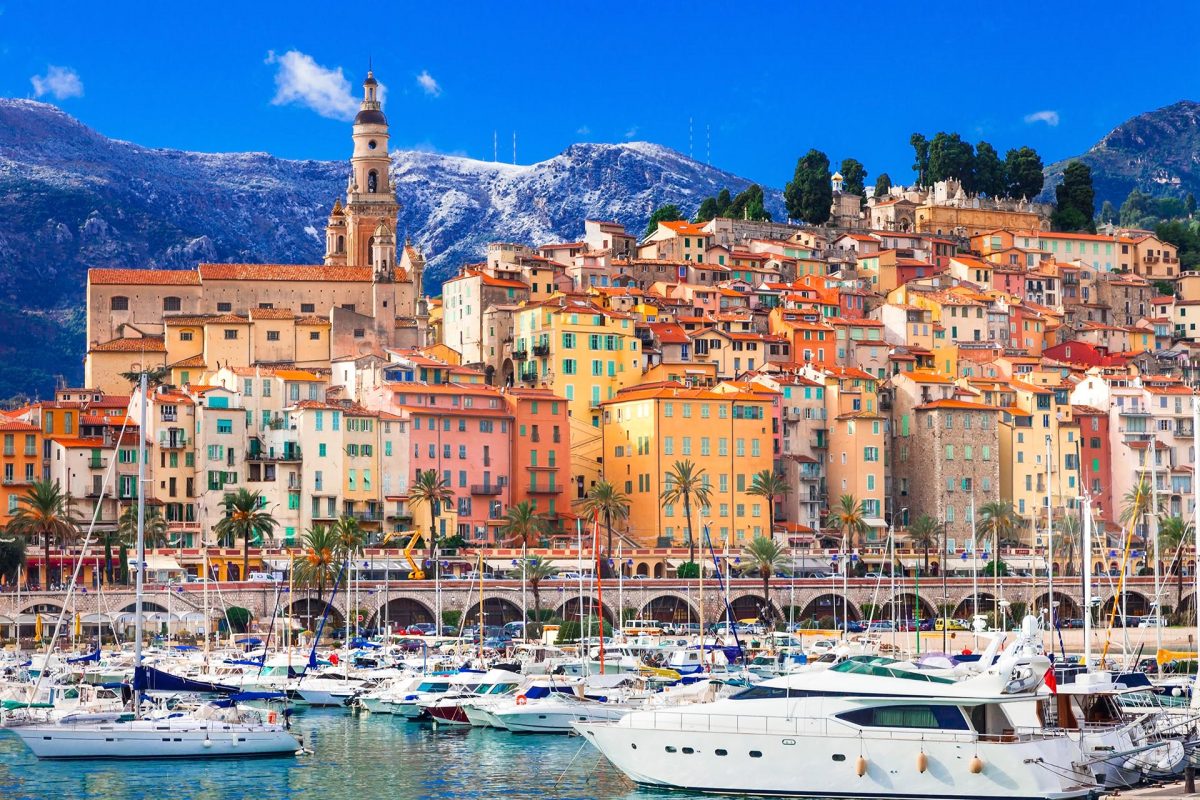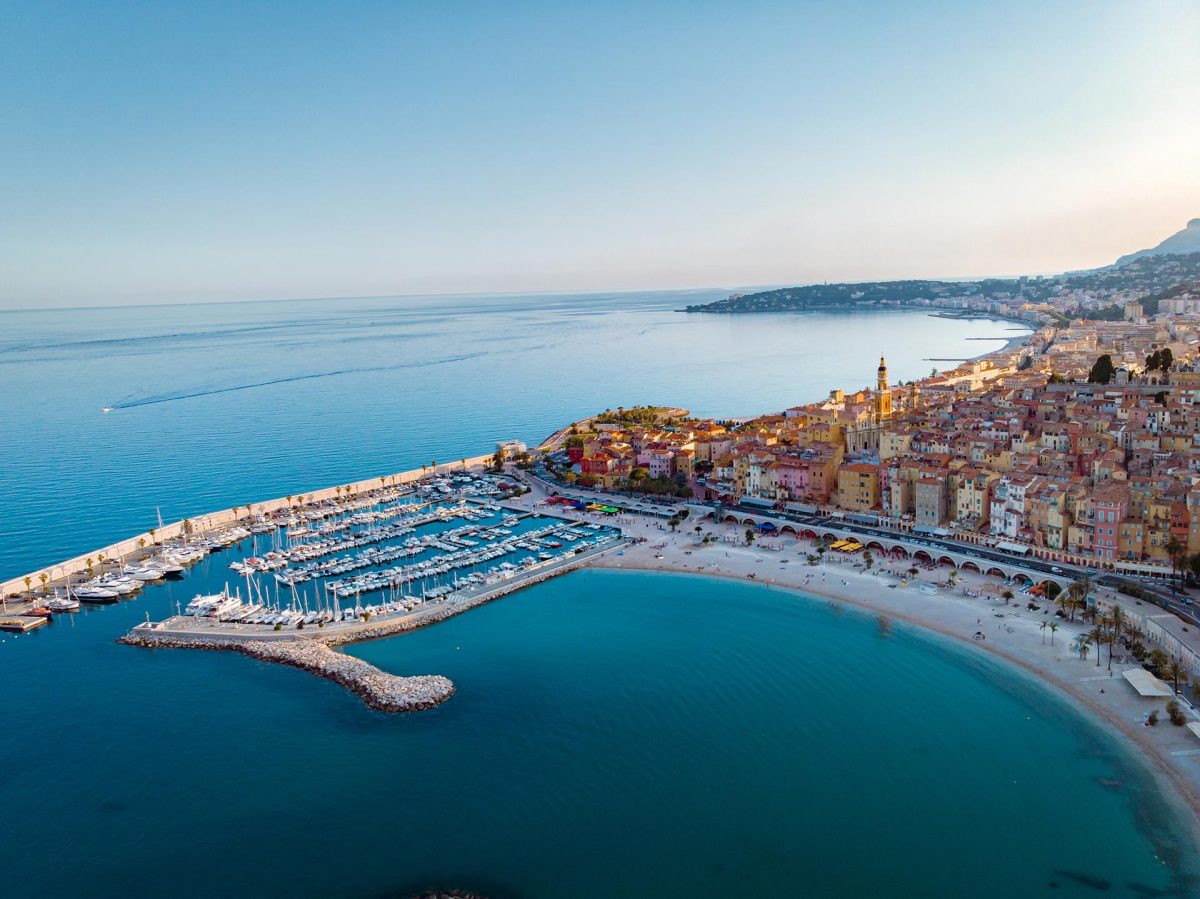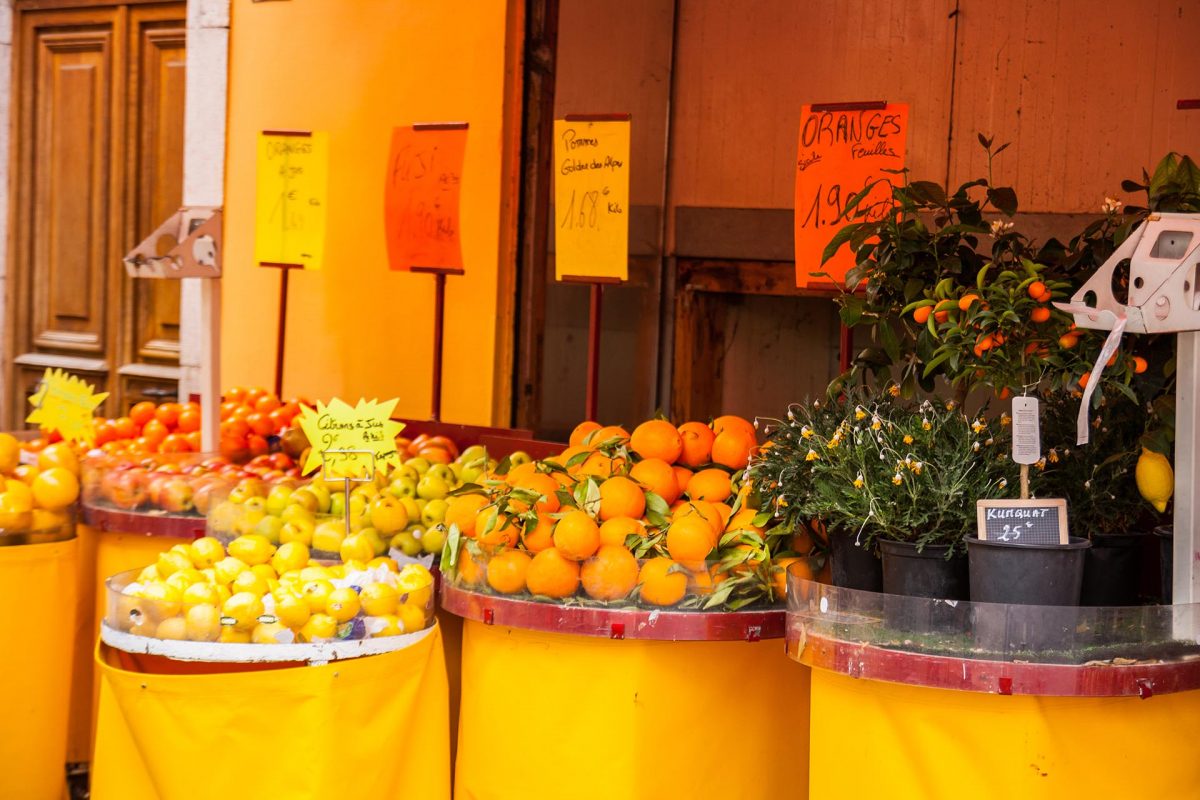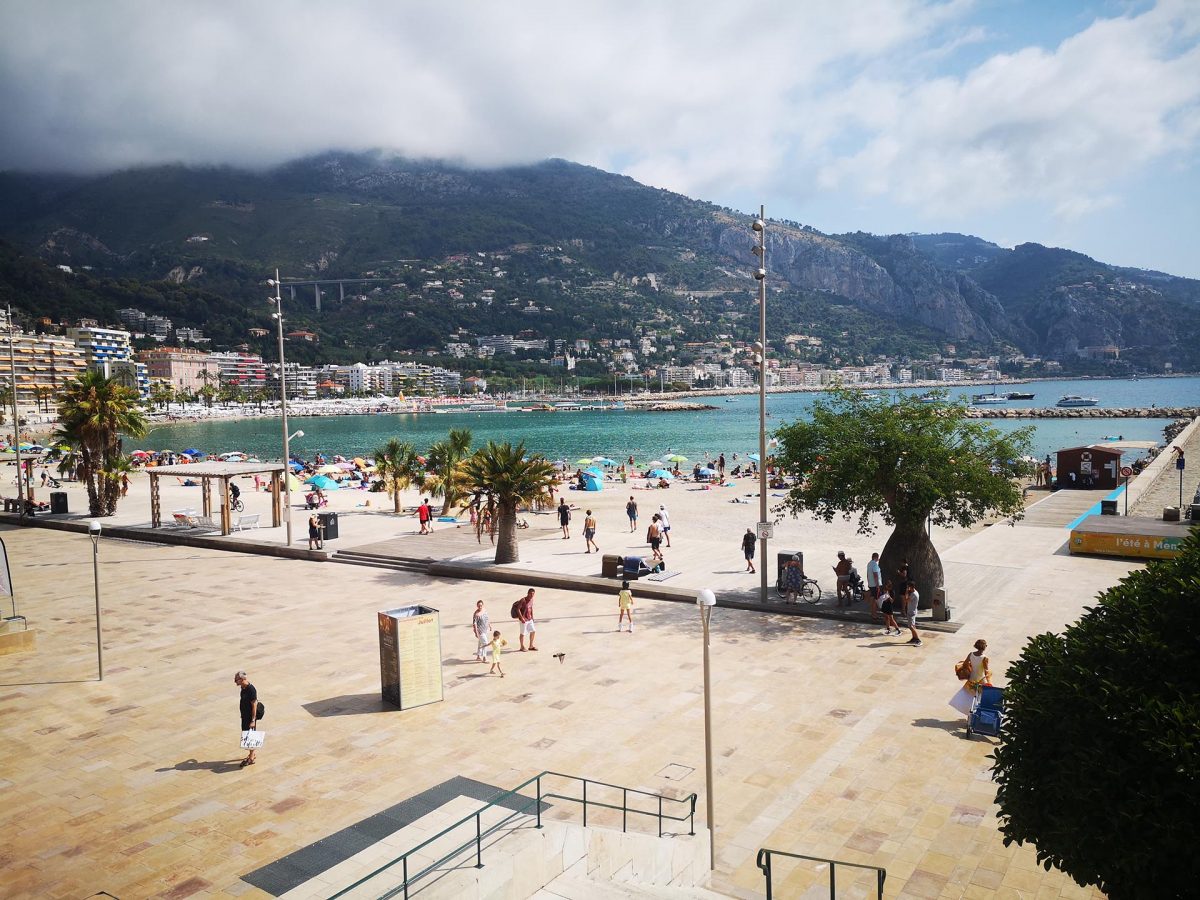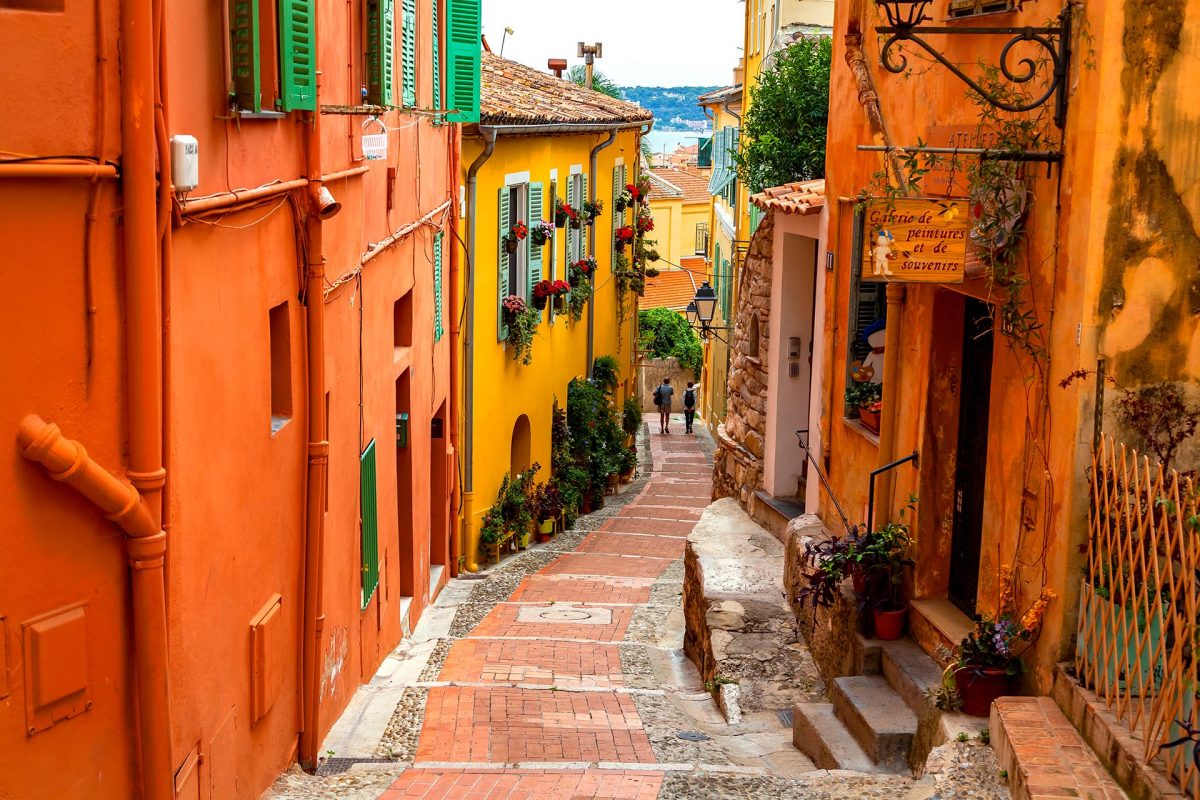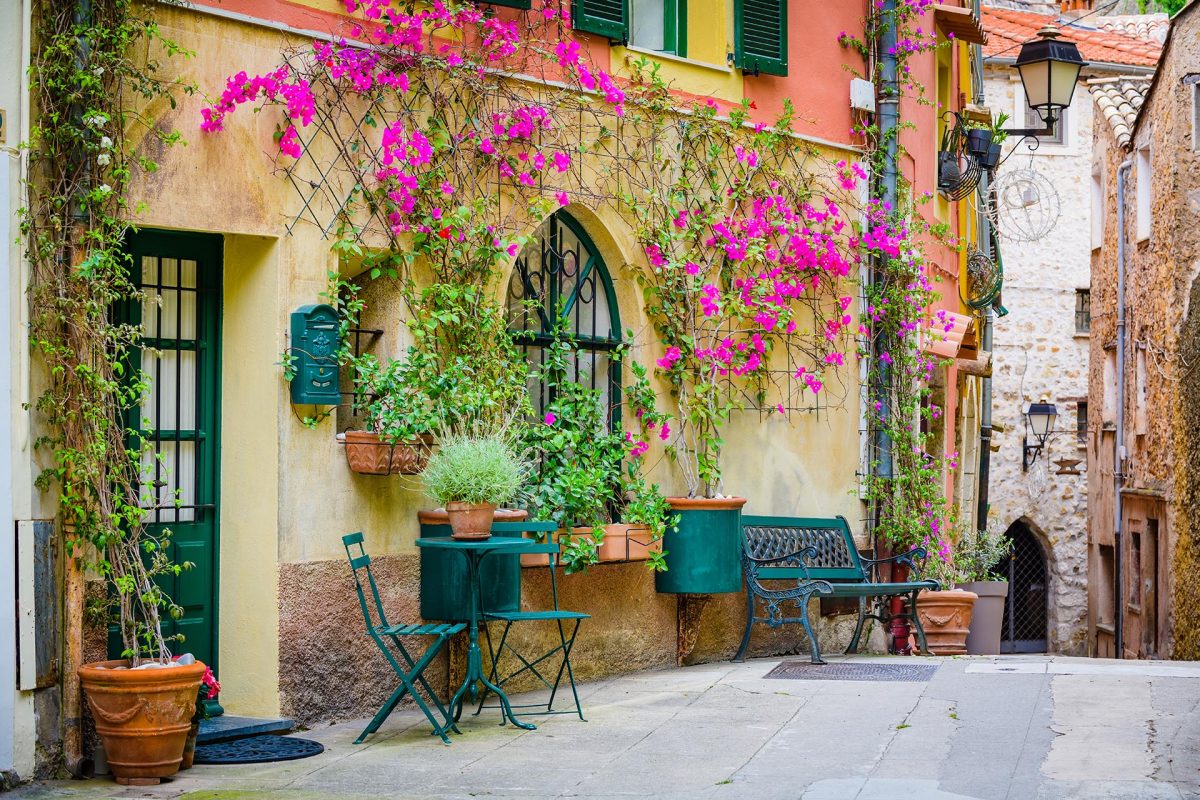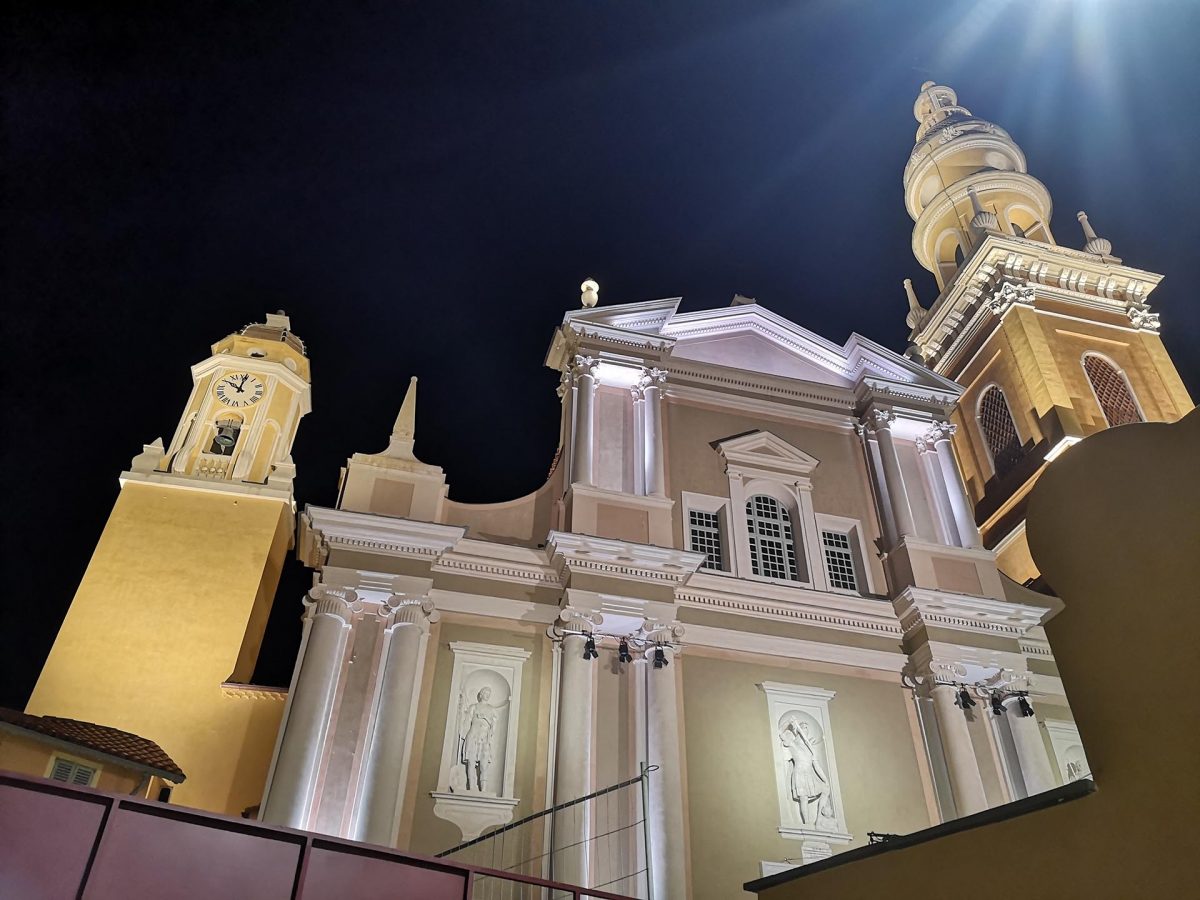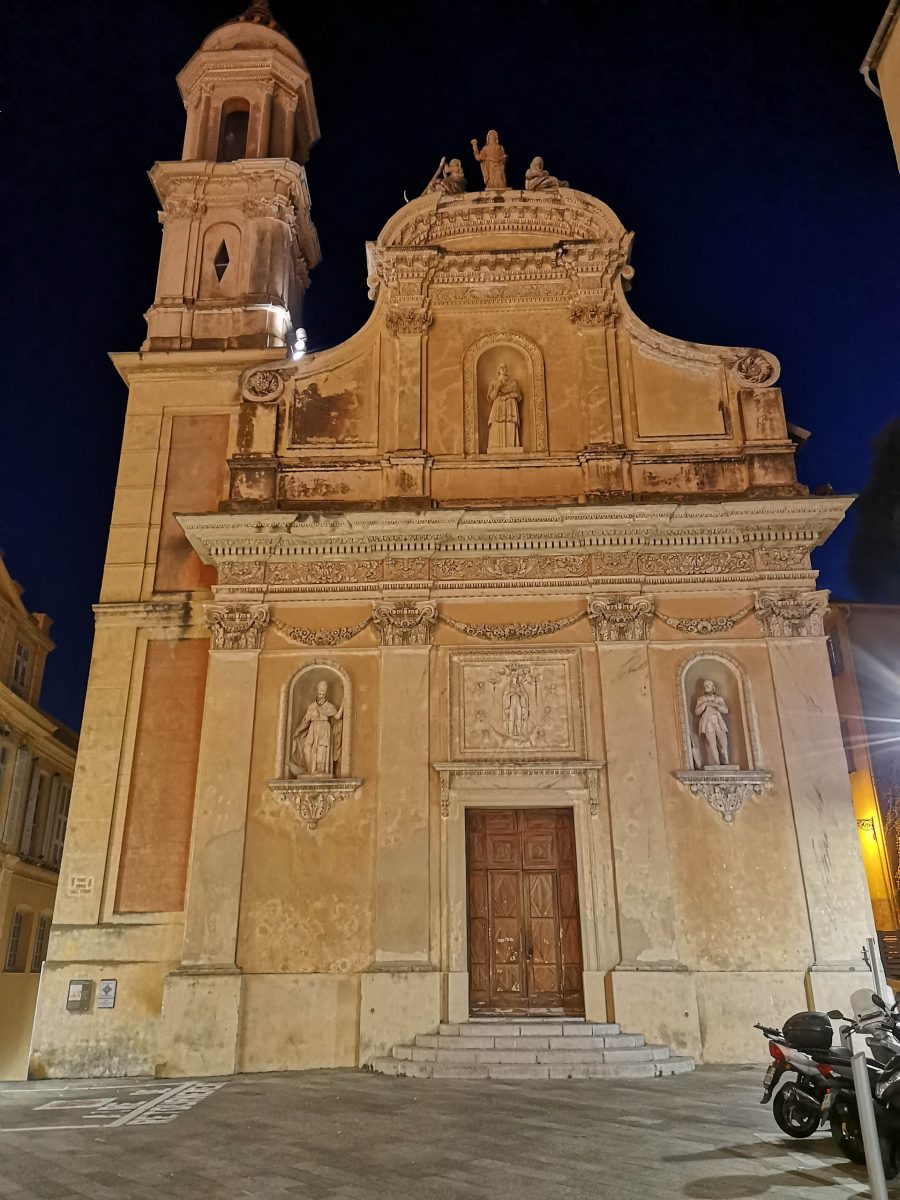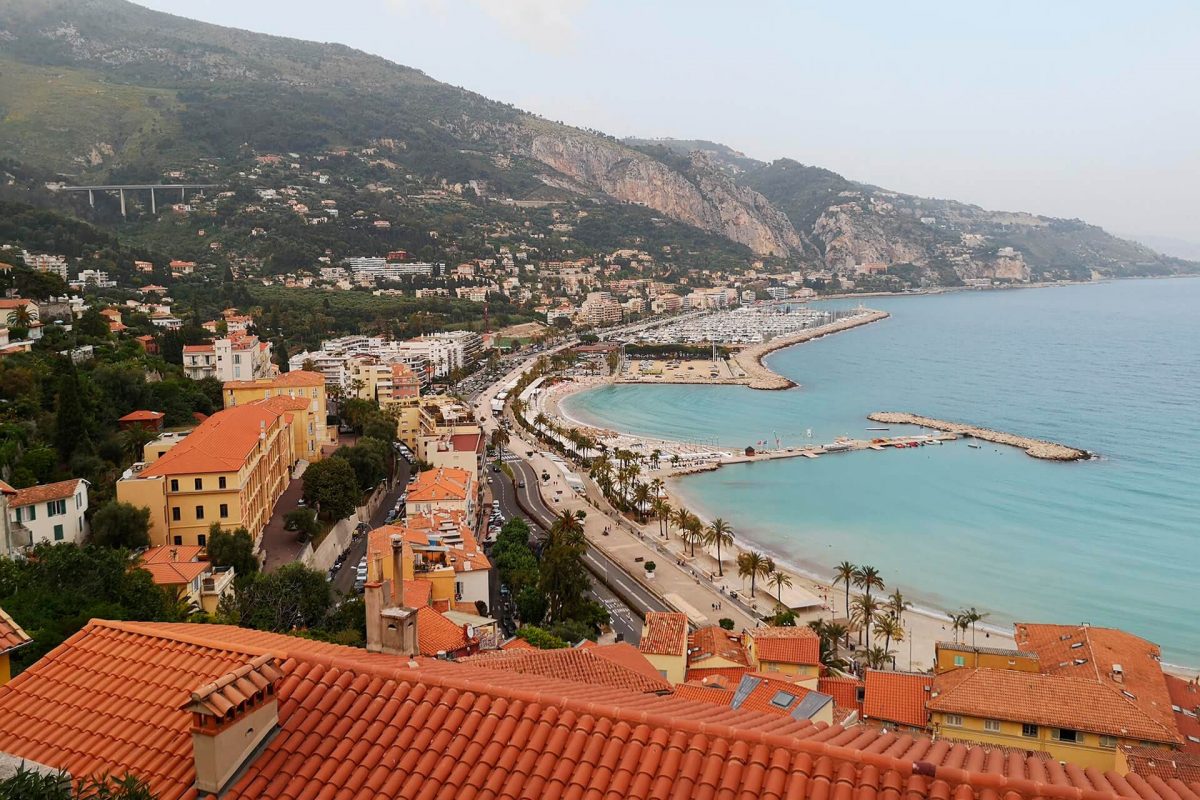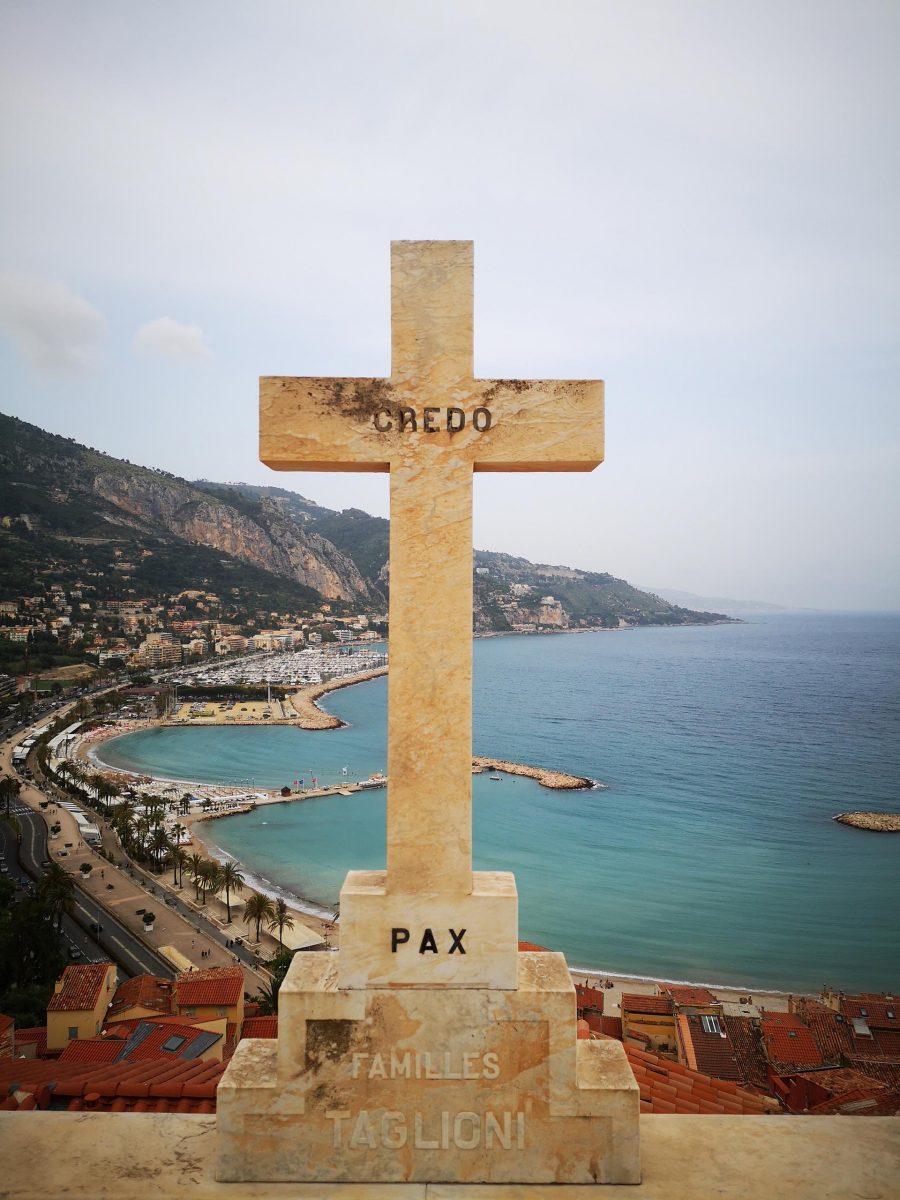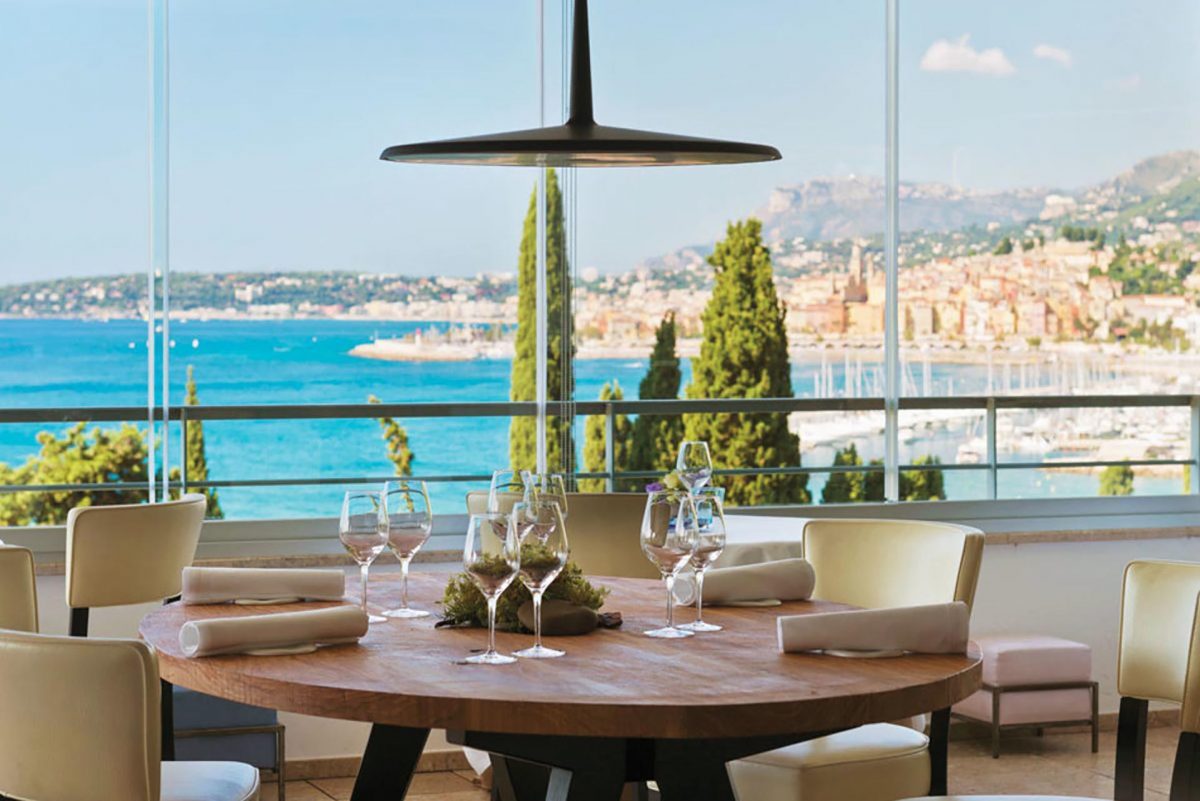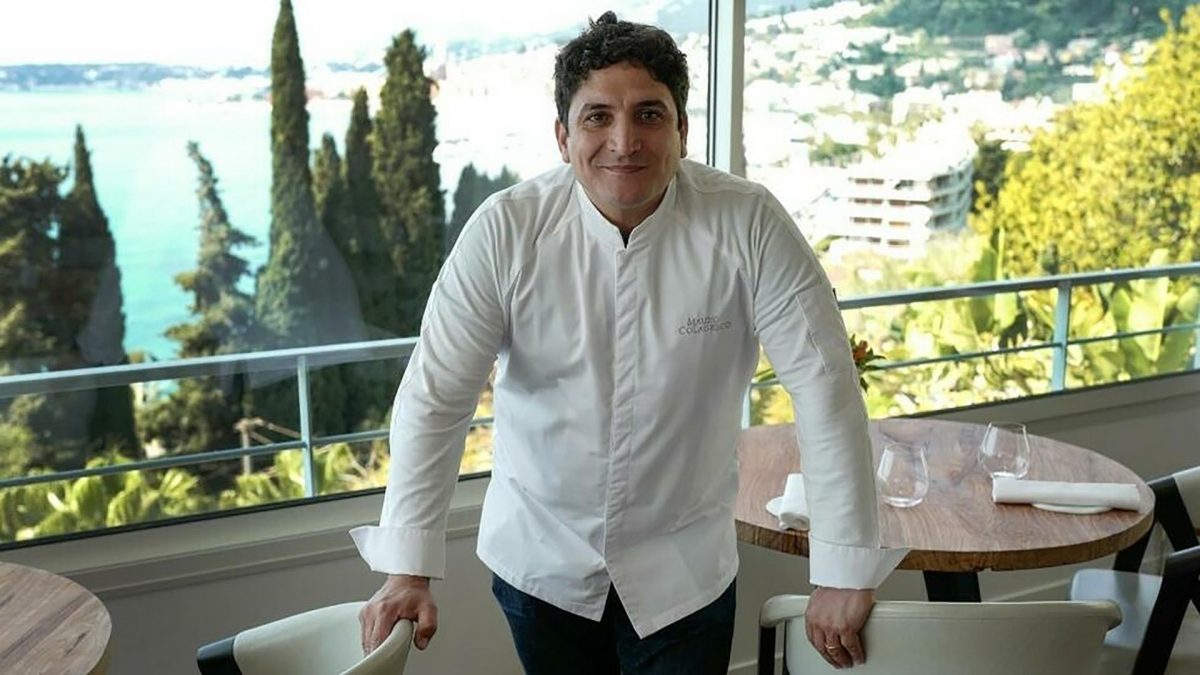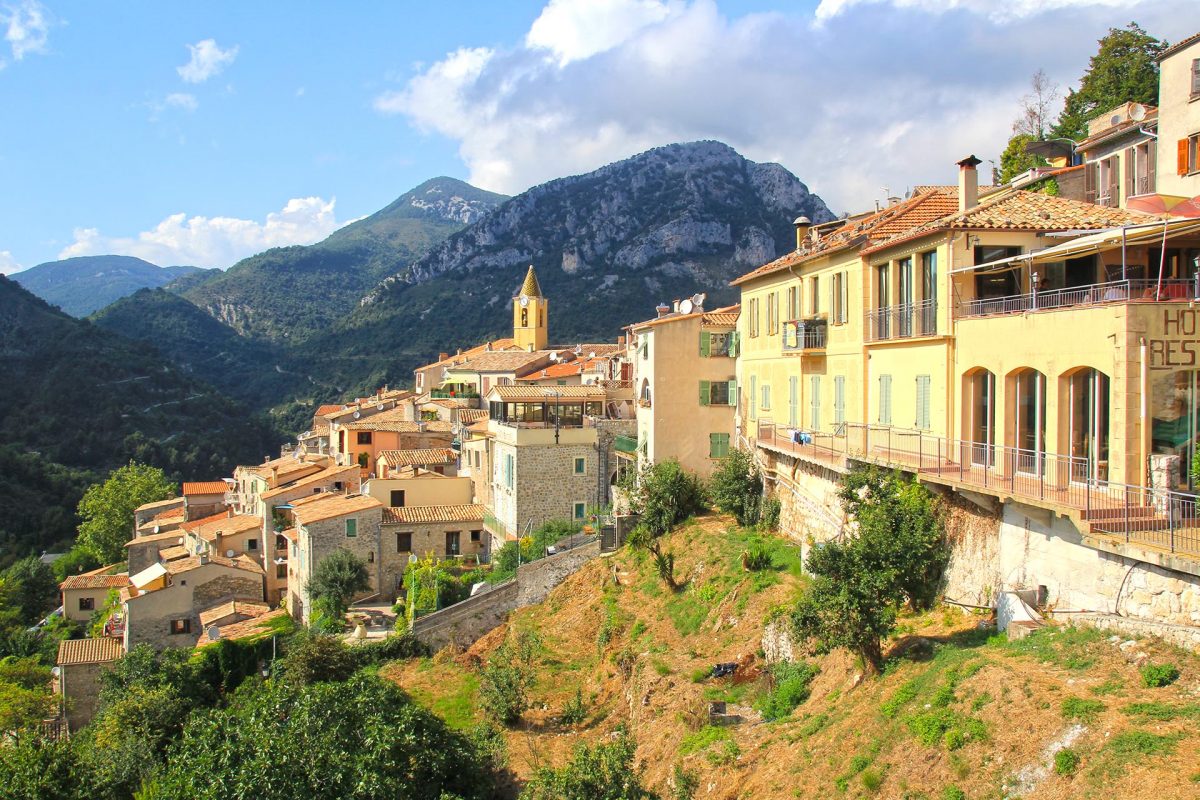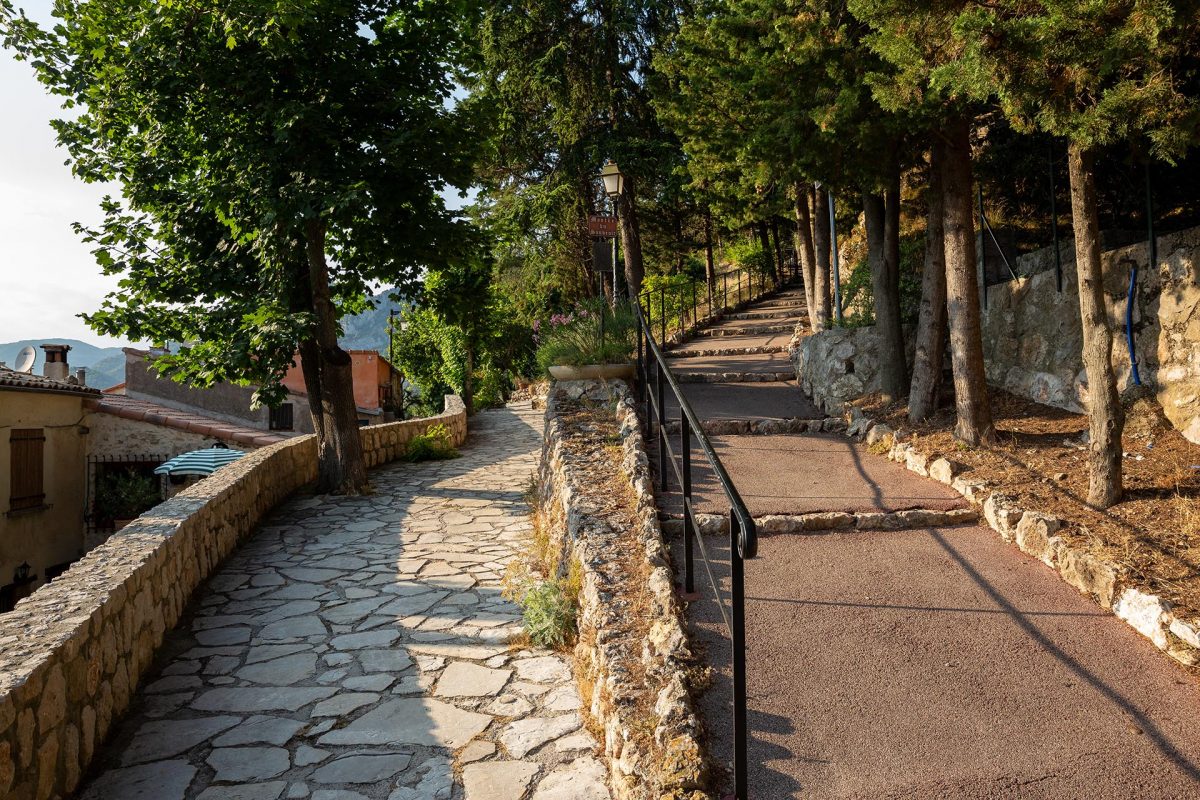In France, a country where gastronomy is the cornerstone of national identity, the names of cities and regions are often so closely linked to the products that have made the area famous that they are practically synonymous. For example, here, if we say “lemon”, we immediately associate it with “Menton” and vice versa. The citrus capital of France is on the Côte d’Azur, on the border with Italy, where the French Riviera meets the Italian one.
The small, 30,000-strong seaside town of Menton, or Mentona in the old fashioned way, seems to have all the makings of a paradisiacal city as we know it. Here the sun shines for about 316 days a year, keeping sadness at bay, the azure sea sparkles at the foot of the picturesque old town with its pastel-coloured houses. The enfilade of the coastal Alps, which encircles Menton, protects it from the harsh winds that are so common in the south of France. Thanks to this unique microclimate, close to subtropical but without the stifling heat and humidity, oranges, lemons and tangerines grow ideally in and around Menton and people are healed from various illnesses. Add to this the architecture – stately palaces and luxurious late 19th century neo-classical and belle époque buildings when the main ensemble of the city was formed.
Back in the 19th century little Menton was the main supplier of lemons to the European market. These positions have been lost, but today the “citrus brand city” continues to be the “purveyor” of an incredibly relaxed atmosphere and discreet chic on the Côte d’Azur. Here, just 7km from the Principality of Monaco, many wealthy people from various countries are retiring. There are excellent transport links, close proximity to all the year round top cultural and sporting activities of the Cote d’Azur and yet the ringing silence of the villas on the slopes of the mountains when it is just you, the sun, the seagulls and the sea in the distance…
These advantages of the coast in general, and Menton in particular, were long appreciated by English and Russian aristocrats, discovering and redeveloping for themselves throughout the 19th century the pretty, mostly fishing villages on the shores of the French Riviera. It turned out that the local microclimate was not only pleasant in summer and winter, but literally prolonged the life of people with lung diseases. Aristocrats fled here at first to escape the unbearably long northern winters, spending “winter seasons” in Nice and San Remo, then building themselves “distant cottages”. After the revolution of 1917 on the Cote d’Azur a large, quite influential Russian diaspora settled there, and in almost every city one can still see a heritage of our ancestors, natives of the Russian Empire. These are orthodox churches in Nice, Cannes, Menton, San Remo, small chapels and ubiquitous memorial tablets with “yates”(name of the old Russian letter replaced by in 1918) reminding of a beautiful bygone era.
However, a slight, subtle and dragging at heartstrings sadness won’t take you over completely, even if you head to one of Menton’s main attractions, the Old Chateau Cemetery (Vieux Chateaux). At the top of the hill above the colourful Old Town is an ancient ‘VIP cemetery’, perhaps with one of the most beautiful views of the Mediterranean, the port, the surrounding mountains and the surrounding countryside. Here members of the noble Italian, English, French and Russian families have been laid to rest in splendid family vaults. Take 30-40 minutes to walk up one of the Old Town’s steep streets to the top and walk between the tombs. It will be no worse than wandering around, for example, the famous Père Lachaise cemetery in Paris or Saint-Genevieve-des-Bois, the largest burial ground for white migrants abroad. Reading the epitaphs on Russian graves and looking at the dates, you sink into the past and start to wonder what caused the death of a Navy captain of second rank at age 34, or a young musician girl at 25, whether from an accident or from tuberculosis. After all, many sick people came to Menton not knowing how much time they had left. Many of those buried in the cemetery of the Old Chateau had already passed away in their hundredth year. This airy sense of the mortality of our lives is, however, so weightless that it is forgotten as soon as you leave the cemetery gate and walk down the hill back into town, to the noise of the streets and the smells of Italian coffee and French croissants…
Menton’s light, pinching and cocoon-like atmosphere blends so well with the inevitable lull of the Côte d’Azur “velvet season” that it can be recommended as the ideal place to reset and recharge your inner batteries during the cold season.
The evergreen city, a botanical garden of palm trees and rows of citrus trees, starts to come alive after the summer fever and the lull in October with the start of the International Fantastic Film Festival at the historic Barriere Casino. That’s right, you heard right. The Côte d’Azur has clearly not had enough cinematic events, so to make sure that Menton and its residents are not offended, they have decided to hold a new film festival here from 2017. This year it will only be the fifth, but the beginning is bad luck and it seems that the ongoing pandemic will not be a hindrance (21-24 October).
In November the Côte d’Azur, like the rest of France, begins to prepare for a series of winter holidays. In late November/early December all the cities are already beautifully decorated, the shop windows of the Mediterranean south are white with artificial snow, and the squares shimmer with the lights of Christmas markets. In Nice, they have the Ferris wheel, the symbol of the cold season, while in Menton, the oranges, lemons and tangerines are in full swing. The sea air is the freshest, coldest in the evenings, the sun baking in the afternoon (it can reach +17-18 degrees during the day, so you can sunbathe on the terraces of cafes and restaurants), the streets are half-empty, as compared to the high season. There is almost no traffic jam at the tourist sites in summer, so you can sometimes be almost alone on the coast and in the small mountain villages. After the lull in January, the Cote d’Azur will be getting ready to “explode” with numerous fairs in February and early March. These include, of course, the famous Lemon Festival in Menton, the Carnival in Nice, and the Mimosa Festival in Mandelieu-la-Napoule near Cannes. This year and next year, 2022, if the pandemic does not bring more unpleasant surprises and restrictions, the scope of the celebrations promises to be enormous. After all, even if you live in a branch of paradise on Earth, the longing for spectacle and lively fellowship does not go away.
What not to miss near Menton
Mirazur Restaurant
According to the prestigious “pre-pandemic” ranking of 2019, the best restaurant in the world (out of fifty) is in Menton. It is the three-Michelin-starred Mirazur, headed by an equally stellar chef, the Argentinian Mauro Colagreco. The list of accolades for the restaurant and its chef is just as impressive as the exquisite haute cuisine menu offered to guests overlooking Menton’s Old Town and Port.
St. Agnes Village
Overlooking Menton at 800 metres above sea level is Saint-Agnes, one of France’s most beautiful villages. This village is rarely mentioned in the guidebooks for foreigners. However, it is well worth a visit for a number of reasons. Firstly, the view of Menton and the coast, as if from an airplane; secondly, the serpentine road to the village is no less vertiginous. Thirdly, Saint-Agnes was home to the famous Maginot Line, named after its creator, the War Minister André Maginot, and designed to protect France from a surprise attack by Nazi Germany. It now houses a military museum and a small botanical garden.
Photo: Elena Kurilenko, shutterstock, rfi.fr, bonv.se, istockphoto, AdobeStock.
